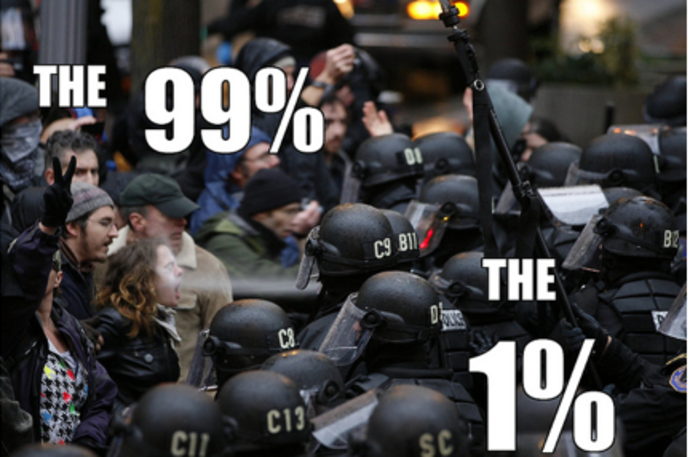Southern-Italian American Demographics
Demographic data, in the US Census Departments “2005-2007 American Community Survey (ACS)", describing over 17 million self-identified Americans of Italian descent, clearly and unequivocally demonstrates that Italian Americans (more accurately southern-Italian Americans, the vast majority are descended from southern Italian immigrants) are part of the 99% of Americans who are suffering the economic consequences of economic decisions made by 1% of the population.
The ACS collects and produces population and housing information every year instead of every ten years. The 2005-2007 ACS three-year estimates are based on data collected between January 2005 and December 2007.
Significantly 2007 was year before the crash, so we have a ‘snapshot' of Italian Americans just before the crash. Specifically for this article, the facts about the Education attainment levels and Occupation categories of southern-Italian Americans in 2007 allows us to make inferences about their economic plight post the 2008 ‘Crash’.
Table I
Education Attainment of Italian Americans 25 years and older
Less than high school diploma
9.6 %
High School diploma or GED
29.9
Some college or Associate Degree
28.3
Total less than college Bachelors
67.8 %
Bachelors Degree
20.4
Graduate or Professional Degree
11.8
(For a much more detailed presentation of ACS Italian American Education Attainment statistics, see the link “Italian Americans by the Numbers – Education: Who will educate our children?” in the ‘related articles’ box on this page.)
As the above table indicates, over two-thirds of the southern-Italian Americans over the age of 25 have an education of less than a bachelors degree.
Can there be any doubt that they are part of the 99%ers? How many of the 1%ers have an education level of less than a Bachelors Degree?
Now consider the occupation statistics.
Table II
Occupation 16 years and older:
Service
15.1%
Sales/office
28.7
Farming, fish, forestry
.2
Construction, extraction, maintence, and repair
8.4
Product, transport, material moving
8.4
Total Non-Professional Work
60.8 %
Professional / Management
39.2
(For a much more detail presentation of ACS Italian American Employment statistics, see the link “Italian Americans by the Numbers – Employment” in the ‘related articles’ box on this page.)
As would be expected; with 67.8% of southern-Italian Americans having less education than a Bachelors degree, it follows that 60.8% of southern-Italian Americans are working in non-professional jobs.
In as much as ‘non-professional’ equates with relatively low-wages, it is a logical inference from these facts that, the majority of southern-Italian Americans are part of the 99% socio-economic class.
Unemployment of southern-Italian Americans
There are no statistics about unemployment levels of southern-Italian Americans per se. However, there are statistics correlating Unemployment with Education Level, which in turn allow us to make inferences about southern-Italian American unemployment.
Below is a chart showing Percentage of Unemployment by Level of Education. On the chart, I have overlaid a ‘note’ indicating which unemployment ‘lines’ are associated with southern-Italian Americas, and also comment.
(Chart originally created by the “Calculated Risk” blog and reproduced by James Joiner in his “Outside the Beltway” blog at http://www.outsidethebeltway.com/unemployment-and-education-2/.)
The above chart clearly indicates those with less than a Bachelors degree level of education (i.e. Red, Purple and Green lines) are suffering far worse unemployment than those with a Bachelors or higher (i.e. Blue line).
Accordingly, from the facts of Italian American education attainment described in the Census data and the facts of unemployment level by education attainment in the above chart, we can infer a very high percentage of Italian Americans are suffering significant economic hardship and anxiety.
Conclusion
The literati and promenite pour out publications and have conferences and celebrity parties, about Food, Wine, Art, Guidos, Gangsters, Renaissance glories, Little Italy nostalgia, and on and on...
But nary a word, a sound, a peep about the low levels of southern Italian American education attainment, low-income employment, high unemployment and economic hardship – go figure!



